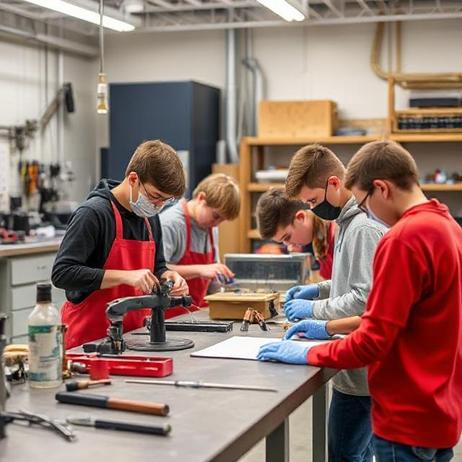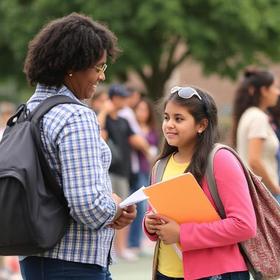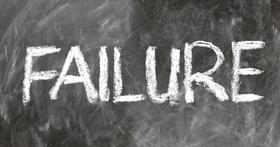Introduction
In today’s fast-changing economy, public schools are no longer just preparing students for college; they are increasingly focused on preparing students for immediate entry into the workforce. Career & Technical Education (CTE) in public schools is a crucial component of that shift. By integrating hands-on technical skills, industry certifications and work-based learning into the high school experience, CTE is helping students become career-ready. This article examines how CTE in public schools is evolving in 2025, highlights its benefits and challenges, and offers guidance for parents, students and educators seeking to leverage CTE programs.
What is CTE?
Career & Technical Education (CTE) refers to programs in public secondary (and sometimes middle) schools that focus on preparing students for high-skill, high-wage and in-demand careers through technical instruction, real-world applications and industry connections. Historically known as vocational education, modern CTE encompasses a broad range of pathways — from information technology and healthcare to manufacturing and agriculture. strategosgroup.com
In public schools, CTE often includes:
Courses of study aligned to one or more career clusters or pathways.
Opportunities to earn industry certifications or credentials while in high school.
Work-based learning experiences such as internships, apprenticeships, job shadows or simulated workplace environments.
Dual-credit options connecting high school with postsecondary education or training.
Why CTE Matters Now
Preparing Students for the Workforce
Public schools that offer CTE provide a direct connection between what students are learning and what employers need. CTE programs help students develop technical skills, professional behaviours and digital savviness that enhance employability. For example, high school students in districts are gaining certifications and starting careers immediately after graduation thanks to strong CTE programs. edtechmagazine.com
Responding to Labour Market Needs
CTE is increasingly aligned with workforce demands. In 2025, trends indicate a shift toward skills such as artificial intelligence support, advanced manufacturing, cybersecurity and durable employability skills like communication and problem-solving.
Closing Equity and Opportunity Gaps
By offering multiple pathways to post-secondary success and employment, CTE helps broaden access beyond the traditional college-for-all route. When implemented thoughtfully, CTE enables students from diverse backgrounds to access meaningful career opportunities.
Statistics at a Glance
CTE now accounts for approximately 15 % of all public high school credits in many districts and nearly 97 % of high school graduates have taken at least one CTE course.
Enrollment in CTE courses in the U.S. rose by about 1.3 % in the 2023-24 school year compared with 2022-23.
How Public Schools are Delivering CTE
Program Structure and Pathways
Public schools usually organise CTE into career clusters or pathways (for example: Health Sciences, Information Technology, Manufacturing, Agriculture). Students may begin exploration courses in middle school or early high school, then progress to more advanced courses and industry certifications.
Partnerships with Industry and Higher Education
Strong CTE programs in public schools often partner with local businesses, community colleges and industry advisory boards. These partnerships ensure curriculum relevance, provide work-based learning opportunities and facilitate credentialing.
Modernising the Classroom and Equipment
To be effective in 2025, CTE programs in public schools must keep pace with current industry technology. That means upgrading labs, integrating digital tools, flexible classroom design and aligning instruction with real-world work environments. Transfr Inc
Certification and Dual Credit
Many public school CTE programs now allow students to earn industry-recognized credentials, stackable credentials and even college credit before graduation. This gives students a running start in the workforce or in further training.
Work-Based Learning and Career Exploration
Public schools with effective CTE programs emphasise early exposure to careers, job shadows, apprenticeships and project-based experiences that mirror real-work scenarios. This exploration helps students make informed decisions.
Benefits of CTE in Public Schools
Improved Graduation Rates: Students who participate in CTE are more likely to graduate on time, due to increased engagement and relevance.
Greater Readiness for Work: Graduates enter the workforce with relevant technical credentials, employability skills and employer confidence in their abilities.
Multiple Pathways: CTE enables students to choose among college-track, trade/training track or combination paths — providing flexibility.
Stronger Community and Economic Ties: Public schools offering CTE strengthen connections with local industry, which benefits student placements and regional workforce development.
Cost Efficiency for Students: Certifications or college credits earned during high school can reduce post-secondary costs and accelerate entry into jobs.
Challenges and Considerations
While CTE has significant promise for public schools, there are caveats and challenges to address:
Program Quality and Alignment
Not all CTE programs are equally rigorous or aligned with current employer needs. Schools must ensure equipment is up to date, instructors have industry currency, and curriculum maps to actual careers.
Equity and Access
Historically, CTE programs have sometimes been segregated or seen as “lesser” tracks. Schools must avoid tracking biases and ensure all students have access to high-quality CTE.
Funding and Resources
Modern CTE classrooms, industry partnerships and credentialing require investment. Public schools must navigate budgeting, grants and community support.
Career Versus College Balance
Some critics argue CTE may sometimes steer students toward short-term jobs rather than longer-term advancement or higher education. Schools must balance both immediate career readiness and future flexibility.
Policy and Oversight
Changes at the federal level, including shifts in oversight and agency responsibility, may affect funding, program design and accountability for public schools.
Recommendations for Parents, Students and Educators
Here are some practical tips for those involved in public‐school CTE:
For Parents and Students
Visit the CTE program: Attend open houses or tours of your school’s CTE offerings.
Ask about industry credentials: What certifications can students earn? Are they recognised by local employers?
Explore pathways early: Begin career exploration in freshman or sophomore year to make informed choices.
Look for work-based opportunities: Internships, apprenticeships or campus-based enterprises provide real insight and experience.
Ensure flexibility: Choose CTE programs that allow for both immediate employment and pathways to college or further training.
For Educators and School Leaders
Keep curriculum industry-aligned: Partner with businesses and advisory boards to ensure relevance.
Modernise infrastructure: Update labs, integrate digital tools and align spaces with the actual work environment.
Focus on equity: Ensure students from all backgrounds access CTE and avoid tracking students into narrow pathways without future options.
Communicate value: Promote CTE as a serious pathway to high-demand careers, not as a fallback.
Track outcomes: Measure credential attainment, job placement, college enrolment and other success metrics to continuously improve.
A Look toward 2025 and Beyond
As we progress through 2025, three trends are particularly shaping CTE in public schools:
Greater integration of AI, automation and digital tools in CTE curricula and classrooms.
Expanded work-based learning and heightened employer involvement in public school CTE programs.
Policy and funding shifts, including federal oversight changes and increased demand for skills-based credentials over traditional degree routes. k12dive.com
For public schools and their communities, this means CTE is no longer optional — it is central to preparing students for a workforce where technological change is rapid and employer demands are evolving.
Summary Table: CTE in Public Schools – Key Points
| Area | What It Means in 2025 |
|---|---|
| Program Scope | Broad range of career clusters; technical + professional skills |
| Credentials & Credit | Industry-recognized certifications; dual credit options |
| Equipment & Infrastructure | Modern labs; digital tools; flexible classroom design |
| Partnerships | Strong ties with industry and postsecondary partners |
| Access & Equity | Inclusive programs, avoiding outdated tracking |
| Outcomes | Graduation rates, credential attainment, job readiness |
| Policy & Funding | More federal alignment; evolving oversight and resources |
Conclusion
Career & Technical Education (CTE) in public schools is emerging as a high-impact strategy for workforce preparation in 2025. By bridging the gap between classroom learning and real-world careers, CTE offers students meaningful options—whether they aim to enter the workforce directly, pursue further study or combine both. For parents, students and educators, understanding how CTE works, what to look for in a strong program and how to align it with student goals is essential.
When a public school’s CTE program is well-executed—with modern equipment, relevant credentials, strong partnerships and equitable access—it becomes a launchpad for careers as well as education. As the economy evolves, so too must our approach to preparing the next generation of workers. For those ready to embrace it, CTE offers one of the most pragmatic and promising routes forward.














